#later pre raphaelite movement
Explore tagged Tumblr posts
Text

The Hour Glass
Artist: Evelyn De Morgan (English, 1855 – 1919)
Date: 1905
Medium: Oil on canvas
Collection: The De Morgan Collection
Description:
Evelyn De Morgan's sister Mrs Stirling wrote the following description in 1924:
In an ancient chair, inlaid with ivory, a woman is seen seated. Behind her on the wall are glowing tapestries; a gold lamp of medieval design is suspended above her head. Her draperies, in wonderful hues of yellow and russet bronze, are thickly sewn with pearls, the delineation of which in correct perspective constituted a tour de force. Jewels of barbaric design accentuate the richness of her attire and gleam again from her quaint head-dress, beneath which shows the first indication of age - her whitening locks. Meanwhile, with a brooding sorrow, her gaze is fixed upon an hourglass, clasped in her slender fingers, wherein the sands are swiftly running out: at her feet is a dying rose.
#painting#evelyn de morgan#english painter#woman#tapestries#gold lamp#draperies#jewels#attire#hourglass#rose#sadness#genre art#later pre raphaelite movement#english culture#english art#oil on canvas#fine art#20th century painting#european art#20th century art
6 notes
·
View notes
Note
Who are your favorite artists? The art kind.
I'm a bit surprised I haven't been asked this question before!
I appreciate so many artists that it's hard to narrow it down. But based on what I can remember and what I can check on my Instagram and bookshelf, here are some of my favorites:

Gustave Doré (1832–1883) → A French artist, illustrator, and sculptor, celebrated for his intricate and dramatic engravings and illustrations. He is best known for his illustrations of classic literary works, including Dante Alighieri's The Divine Comedy, John Milton's Paradise Lost, and Edgar Allan Poe's The Raven. His skillful blend of realism and romanticism, combined with his mastery of visual storytelling, has established him as a significant figure in the history of illustration and fine art.

Vincent van Gogh (1853–1890) → A Dutch post-impressionist painter renowned for his expressive use of color and bold brushwork, which had a profound influence on 20th-century art. His most famous works, such as Starry Night, Sunflowers, and The Bedroom, showcase his unique style and emotional depth, capturing the beauty of the world around him.

Henriëtte Ronner-Knip (1821–1909) → A Dutch-Belgian painter best known for her detailed and charming depictions of domestic cats. Specializing in animal paintings, her style combined realism and a romantic touch, often portraying cats in cozy, playful, or elegant settings that captured their personalities and grace. She was celebrated for her ability to convey texture, particularly in fur, and created intimate, lifelike scenes that became popular in 19th-century bourgeois society.

John William Waterhouse (1849–1917) → A British painter associated with the Pre-Raphaelite movement, known for his romantic and mythological subjects. His art style blends elements of Romanticism and Classicism, featuring realistic figures, rich colors, and a strong focus on nature and detail. Waterhouse is best known for his depictions of female figures from mythology and literature, such as The Lady of Shalott and Ophelia, which convey a sense of beauty, melancholy, and mystery, making his work iconic in the realm of 19th-century art.

Harry Clarke (1889–1931) → An Irish stained-glass artist and illustrator. His work was influenced by Gothic art, Symbolism, Art Nouveau, and Irish folklore. This blend resulted in a distinctive aesthetic that harmoniously intertwines beauty with darker themes. Clarke is best known for his illustrations in classic literary texts, including James Joyce's Dubliners and Edgar Allan Poe's Tales of Mystery and Imagination. In these works, his illustrations masterfully balance whimsy and darkness, creating striking visual narratives that continue to resonate with audiences.

Alphonse Mucha (1860–1939) → A Czech painter and decorative artist best known for his distinctive Art Nouveau style, characterized by intricate, flowing lines, elaborate floral motifs, and a harmonious use of soft colors. Mucha's work often features idealized female figures, embodying beauty and elegance, and is heavily inspired by his fascination with nature and Slavic folklore. He gained fame for his poster designs, particularly those promoting the actress Sarah Bernhardt, as well as his decorative panels and illustrations.

J.C. Leyendecker (1874–1951) → An American illustrator renowned for his iconic magazine covers and advertising art, particularly his work for The Saturday Evening Post and the Arrow Collar Man campaign. Leyendecker's mastery of visual storytelling and branding helped shape American commercial art in the early 20th century, and he significantly influenced later artists, including Norman Rockwell.

Leonid Afremov (1955–2019) → A Belarusian-born artist known for his vibrant, impressionistic paintings created using a palette knife technique. His distinctive art style features bold colors and dynamic brushstrokes, often depicting landscapes, city scenes, and emotional moments, such as rain-soaked streets or sunlit parks.

Ayami Kojima → A Japanese artist and illustrator best known for her work in video game design, particularly as the character designer for the Castlevania series. Her art style is characterized by intricate, gothic aesthetics, combining dark fantasy elements with a detailed, ethereal quality.

Victoria Francés → A Spanish illustrator known for her evocative illustrations that blend gothic, fantasy, and romantic themes. She is particularly known for her illustrated books, including the popular series Faery Tales, which showcases her unique blend of fantasy and gothic aesthetics.

Yoshitaka Amano → A Japanese artist and illustrator renowned for his distinctive style in character design and concept art, particularly for the Final Fantasy video game series. His style fuses his interests in traditional Japanese aesthetics like those of wood block prints with Western fantasy elements. It results in ethereal forms, and a dreamlike quality, especially with Amano's use of watercolor techniques and intricate details to create a sense of movement and fluidity in his work.

Nico Delort (IG: nicodelort) → A French illustrator known for his detailed, black-and-white artworks created using scratchboard techniques. His art style is heavily influenced by the aesthetics of 19th-century engravings and woodcuts, blending elements of Gothic, fantasy, and mythological themes. Delort's work is recognized for its dramatic use of light and shadow, intricate textures, and atmospheric depth, often depicting moody, fantastical scenes.

Vania Zouravliov → A Russian-born artist known for his intricate, surreal illustrations that blend dark, fairy-tale-like themes with fine detail and symbolism. Zouravliov's work explores beauty and darkness, merging the macabre with the fantastical.

James Jean (IG: jamesjeanart) → A Taiwanese-American visual artist and illustrator known for his surreal, highly detailed works that blend elements of fantasy, mythology, and pop culture. Jean gained early recognition for his award-winning covers for DC Comics' Fables series.

Audrey Kawasaki (IG: audkawa) → A Japanese-American artist known for her blend of contemporary Japanese aesthetics and Western art influences. Her ethereal paintings often depict young women surrounded by nature, featuring intricate line work and a soft color palette. Her works are typically painted on wood panels, adding a quality that enhances the emotional depth of her subjects.

Jessica Cioffi (IG: Loputyn) → An Italian artist known for her enchanting illustrations and concept art that seamlessly blend traditional and digital techniques. Her work reflects the influence of 19th century neo-gothic and Japanese manga, and among the artist's favorite themes are witchcraft, folklore, and mystery.

Gretel Lusky (IG: gretlusky) → An Argentine digital artist and illustrator, Gretel Lusky is recognized for her whimsical, vibrant artwork featuring fantasy characters, and magical themes. Her style blends cartoon and anime elements, characterized by bold lines, expressive characters, and a colorful palette. She is well-known for her enchanting illustrations on social media, where she shares art tutorials and collaborates on various comics, book covers, and other projects. She is also known for her debut graphic novel Primer, an original graphic novel for DC Comics.

Margaret Morales (IG: margaretmoralesart) → A Filipino watercolor artist currently residing in America. Margaret Morales is known for her dreamy, ethereal portraits that intertwine feminine figures with elements of nature, such as flowers and animals. Her style, characterized by soft brushwork and pastel hues, creates a surreal, fairytale-like atmosphere. Her evolving work draws inspiration from art nouveau, mythology, fantasy, natural elements, Japanese/manga art, and fashion.

Tactooncat → An Indonesian digital artist known for creating illustrations that feature cats in a humorous and whimsical style, particularly cat memes and videos. Their work appeals to cat lovers and fans of lighthearted, expressive illustrations.
There are so many more, but hopefully the ones I've mentioned have caught your interest enough that you'll want to look them up. Each artist offers a unique perspective, whether through their distinctive style, use of color, themes, or techniques—there’s plenty to discover and enjoy.
#ask#anon ask#artists#art#artwork#anonymous#gustave dore#vincent van gogh#henriette ronner-knip#john william waterhouse#harry clarke#alphonse mucha#j.c. leyendecker#leonid afremov#ayami kojima#victoria frances#yoshitaka amano#nico delort#vania zouravliov#james jean#audrey kawasaki#jessica cioffi#loputyn#gretel lusky#margaret morales#tactooncat
35 notes
·
View notes
Text



Fanny Eaton (1835–1924) was a prominent British artist's model of Jamaican descent whose striking features embodied the ideals of Pre-Raphaelite beauty. Born as Fanny Matilda Antwistle in Jamaica, she moved to England as a child and later became a muse for numerous artists in the mid-19th century. She posed for renowned painters like Dante Gabriel Rossetti, John Everett Millais, and Joanna Boyce, often portraying biblical, mythological, or exoticized figures in their works.
Eaton's modelling career, spanning the 1850s and 1860s, coincided with the height of the Pre-Raphaelite Brotherhood's influence. Her presence in their art highlighted the movement's interest in diverse and unconventional beauty, setting her apart in an era of predominantly white subjects. Beyond her modelling, she lived a humble life, working as a domestic servant to support her family after her husband's death in 1881.
Fanny Eaton passed away on March 4, 1924, at the age of 88, in Acton, London. Though she died in relative obscurity, her legacy has been rediscovered in recent years, celebrated as a symbol of diversity and an essential contributor to 19th-century British art. 🇯🇲
#black people#black history#blacktumblr#black#black tumblr#pan africanism#black conscious#africa#black power#black empowering#Fanny Eaton#model#pre raphaelite#jamaica#black british history#biography
18 notes
·
View notes
Text

John William Waterhouse was an English painter who completed a work titled "The Magic Circle" in 1886. He adopted the style of the Pre-Raphaelite Brotherhood(PRB) later in his career although the movement itself became lost toward the end of the century.
The image itself depicts a sorceress drawing a magic circle on the ground to create a ritual space.
18 notes
·
View notes
Text

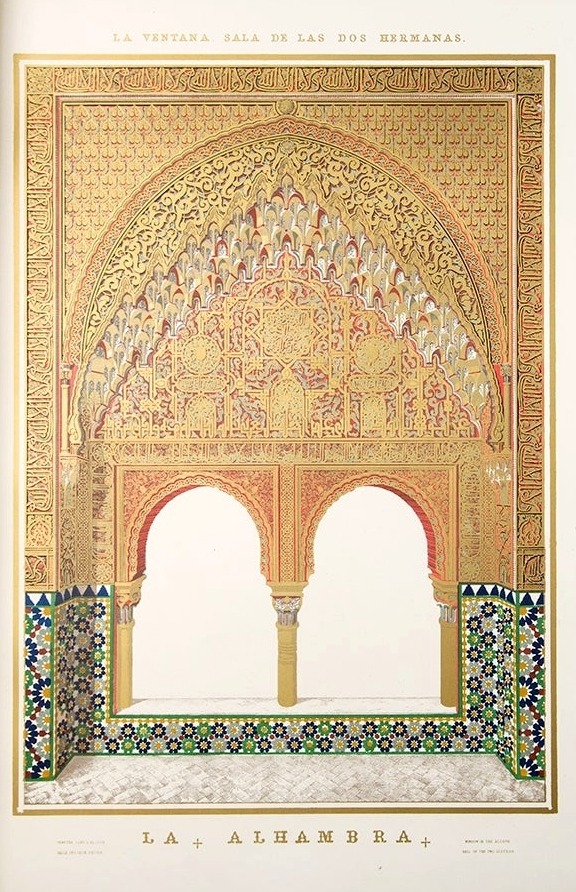
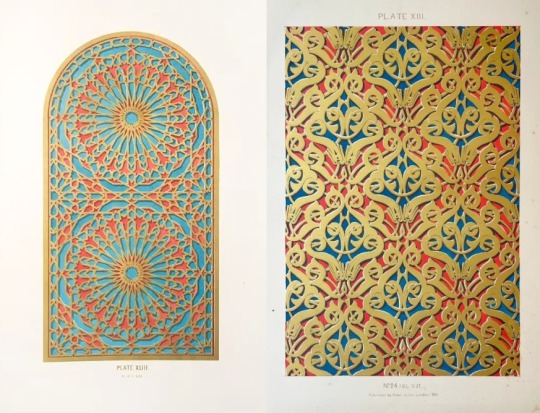
NOW ON VIEW IN SPECIAL COLLECTIONS
Plans, Elevations, Sections, and Details of the Alhambra
In exploring the Arts Collection for our rare book exhibit, curators Heather and Maya came upon the incredibly detailed and stunning lithographs and engravings in Jules Goury and Owen Jones's Plans, Elevations, Sections, and Details of the Alhambra. Through further research, we learned that this 2-volume set, published in London between 1842 and 1845, was one of the first published books to use the technique of chromolithography, a process that later dominated color reproduction for most of the second half of the 19th century. The set is also an important historical record of the Alhambra, created from drawings done at least twenty years before the first detailed photographic records were made. In 1836, while preparing the original drawings, Jules Goury died of cholera in Granada. This left Owen Jones with the complicated task of finding a printer capable of carrying out the work. He finally resolved to set up his own printing press. The experimental color printing process required up to seven pressings and nearly nine years of trial and error before the work was successfully completed. Jones’s flat colors anticipated the work of William Morris, the Pre-Raphaelites, and the Art Nouveau movement.
Due to its monumental size, we couldn't include this bound set in our exhibit, but it's now on view in the Special Collections reading room along with other portfolios of leaves in the exhibit. The exhibit runs through November 29, but the material in the reading room will be available to view through 2023.
#rare books#chromolithography#Alhambra#HCL Arts Collection#art books#book exhibits#19th century printing#printing process#lithography
95 notes
·
View notes
Text

Hero
Artist: Edward Burne-Jones (British, 1833–1898)
Date: 19th century
Medium: Oil on canvas
Collection: Private collection
Description
Edward Burne-Jones (1833-1898) is considered the most important and accomplished painter of the Pre-Raphaelite movement. He didn't have any formal academic art training and consequently developed his own very distinctive approach, using medieval models as his template but invigorating them with a completely fresh and modern look. His subjects were drawn from a wide range of legends, myths, and spiritual stories; he greatly admired the early Italian Renaissance painters like Botticelli, da Vinci, and Michaelangelo, from whose work he took a great deal of inspiration.
He was a friend of William Morris from their time at Oxford, and later of Dante Gabriel Rossetti and John Ruskin. He designed stained glass and tapestries for Morris' firm and was also a gifted book illustrator. Between 1864 and 1870 Burne-Jones worked principally in watercolour, afterwards concentrating on oil painting. He was created a baronet in 1894, and was also a recipient of the Légion d'Honneur, as his work was extremely popular in France, and in Italy as well, from a relatively early date.
In Greek mythology Hero was a priestess of Aphrodite at Sestos, on the shores of the Hellespont. Her lover, Leander, lived at Abydos, a town on the opposite, Asian, side, and at night would swim across the water to join her, guided by a beacon which she lit. One stormy night he was drowned, and Hero, in despair, threw herself into the sea. The story is told by the Greek poet Musaeus and by Ovid in his Heroides, a source which often provided Burne-Jones with subjects. The picture shows Hero lighting her beacon with dead leaves, the dark blue background suggesting the depths of night.
#mythological art#hero#edward burne jones#british painter#greek mythology#blue#fire#dead leaves#symbolism#oil on canvas#european
14 notes
·
View notes
Text
Evelyn de Morgan, Eos, 1895

Evelyn De Morgan (30 August 1855 – 2 May 1919) was an English painter associated early in her career with the later phase of the Pre-Raphaelite Movement
18 notes
·
View notes
Text














Aubrey Beardsley
Aubrey Beardsley (1872–1898) was a distinctive and influential English illustrator and author, whose career, though brief, left a significant mark on the Art Nouveau and Aesthetic movements. Born in Brighton, England, Beardsley showed an early aptitude for drawing and music, but his artistic talents truly blossomed in his late teens.
Early Life and Education
Beardsley's early life was marked by bouts of illness; he was diagnosed with tuberculosis at a young age, a condition that would affect him throughout his life. Despite these challenges, he attended the Brighton Grammar School and later moved to London, where he briefly studied at the Westminster School of Art.
Artistic Style and Influences
Beardsley's work is characterized by its striking black-and-white contrast, intricate lines, and elaborate, often grotesque, imagery. He was heavily influenced by the Japanese woodcuts that became popular in Europe during the late 19th century, as well as the Pre-Raphaelites, particularly the works of Edward Burne-Jones and Dante Gabriel Rossetti. His art often depicted themes of decadence, mythology, and eroticism, blending the macabre with the beautiful in a unique and provocative manner.
Notable Works
One of Beardsley's most famous works is his illustration for Oscar Wilde's play "Salomé" (1894), where his dramatic and sensuous drawings perfectly complemented Wilde's scandalous text. The illustrations were controversial for their explicit content and intricate style, establishing Beardsley's reputation as both a brilliant artist and a provocateur.
Another significant contribution was his work for "The Yellow Book," a quarterly periodical of the 1890s that became associated with the Decadent movement. As the art editor, Beardsley's illustrations became synonymous with the magazine's avant-garde and often controversial content.
Beardsley also illustrated "The Rape of the Lock" by Alexander Pope, "Le Morte d'Arthur" by Sir Thomas Malory, and numerous other works that showcased his distinctive aesthetic.
Personal Life and Legacy
Beardsley's personal life was as colorful as his art. He was known for his flamboyant personality and was part of the bohemian circles in London. His relationship with Wilde and the scandal surrounding Wilde's trial for gross indecency further cemented Beardsley's reputation as a key figure in the Decadent movement.
Despite his deteriorating health, Beardsley continued to produce a prolific amount of work until his death at the young age of 25. His final years were spent in France, where he converted to Catholicism and reportedly asked for the destruction of his more erotic drawings, a request that was largely ignored.
Influence and Modern Appreciation
Aubrey Beardsley's influence extends far beyond his lifetime. His bold, innovative style paved the way for modern graphic design and illustration. Contemporary artists and illustrators continue to draw inspiration from his work, appreciating his ability to combine beauty with the bizarre in ways that challenge and captivate audiences.
Beardsley's work remains a powerful testament to the creative spirit of the fin de siècle, reflecting the complexities and contradictions of an era obsessed with beauty, transgression, and the boundaries of artistic expression.
13 notes
·
View notes
Text

Evelyn De Morgan, The Angel of Death, 1881
Evelyn De Morgan (30 August 1855 – 2 May 1919) was an English painter associated early in her career with the later phase of the Pre-Raphaelite Movement, and working in a range of styles including Aestheticism and Symbolism. Her paintings are figural, foregrounding the female body through the use of spiritual, mythological, and allegorical themes. They rely on a range of metaphors (such as light and darkness, transformation, and bondage) to express what several scholars have identified as spiritualist and feminist content. Her later works also dealt with the themes of war from a pacifist perspective, engaging with conflicts such as the Second Boer War and World War I. Via Wikipedia

7 notes
·
View notes
Note
Hi hope you’re having a wonderful day! May I ask if you can think of an out-of-universe reason aside from Jonsa for GRRM to write about Sansa’s crush on Waymar Royce?
Let me think . . . .
Her admiration for Knights (Benjen, Waymar -later Jon),
Her connection with the Night's Watch (Benjen, Waymar -later Jon),
She has no problem to fall for a "second son" meaning "not the first born/male heir" (Waymar and Loras are third sons),
Courtly Love, most of them impossible, or intended to remain unconsummanted, or to end tragically and others to be unrequited (Waymar and Loras belong to celibate orders, Loras was gay, Sansa was betrothed with other boys/men).
Dark haired guy with Redhead girl is a romantic trope, more in particular "Heroes want Redheads." George loves Lord Byron and Byronic heroes (like Jon) are usually dark/dark haired, also George loves the Pre-Raphaelite movement, and Pre-Raphaelite muses are redheads. George loves redheads, he married two of them.
But are these reasons really "aside from Jonsa"?
65 notes
·
View notes
Text
Now, I have never wrote anything that would count as fanfiction and I am generally disinterested in writing plot (as opposed to vague vibes, scenes and descriptions) but, BUT "The Hound" by H.P. Lovecraft scratches my brain in a weird way that makes me want to attempt something with it.
I mean, I mean:
Wearied with the commonplaces of a prosaic world, where even the joys of romance and adventure soon grow stale, St. John and I had followed enthusiastically every aesthetic and intellectual movement which promised respite from our devastating ennui. The enigmas of the Symbolists and the ecstasies of the pre-Raphaelites all were ours in their time, but each new mood was drained too soon of its diverting novelty and appeal. Only the sombre philosophy of the Decadents could hold us, and this we found potent only by increasing gradually the depth and diabolism of our penetrations. Baudelaire and Huysmans were soon exhausted of thrills, till finally there remained for us only the more direct stimuli of unnatural personal experiences and adventures
The narrator and St. John, both decadents to the core, living a secluded existance in a gothic manor, seeking new thrills through graverobbing. I know they sleep in separate rooms and are probably already tired of sexual explorations but I will not believe that they didn't explore each other in many, many ways. And even later, two companions, living their lives in devotion to the unnatural, always trying to escape their ennui, it just strikes a certain chord, doesn't it? To share your life with a friend with whom you've read Huysmans, studied Necronomicon, with whom you reenact vile rituals, with whom you create morbid art and play dreadful music, with whom you go on trips to rob old graves... that is certainly a dream.
#they are queer in a way that defies labels#h.p. lovecraft#aestheticism#art#decadent movement#literature#joris karl huysmans#gothic literature#charles baudelaire#fanfiction#lovecraft the hound
13 notes
·
View notes
Text

New Lamps for Old
Artist: Joseph Southall (British, 1861–1944)
Date: 1900
Medium: Tempera on canvas
Collection: Birmingham Museums Trust and Art Gallery, Birmingham, United Kingdom
Joseph Edward Southall
Joseph Edward Southall was an English painter associated with the Arts and Crafts movement.
A leading figure in the nineteenth and early twentieth-century revival of painting in tempera, Southall was the leader of the Birmingham Group of Artist-Craftsmen - one of the last outposts of Romanticism in the visual arts, and an important link between the later Pre-Raphaelites and the turn of the century Slade Symbolists.
#oil on tempera#early 20th century#joseph edward southall#british painter#european#romanticism#peacock#women#man#turban#custome#fruit#trees
7 notes
·
View notes
Text
How Modern is Romanticism?
Romanticism is perceived through its driest definition¹ to be a fixed artistic period running from the late-18th to early-19th century. But unlike many movements that came and went before and after it, Romanticism as a cultural movement never quite fell entirely out of fashion and has laid the groundwork for many other movements and as a set of ideas influenced visual art, literature, philosophy and many other things. As well as persisting long after its designated period, the concepts of Romanticism were brewing and bouncing around in literature and visual arts long before it became its own recognised movement. Romanticism, as one of the most iconic and perhaps most important literary movements, is both far older and far more modern than it might first appear.
To be clear before this Essay goes much further, Capital ‘R’ Romance and Romanticism are very different to soft ‘r’ romance, romance being of love and courtship between individuals and what is seen in classical tales, while Romance refers to the product of Romanticism. While Romance plays a role and can colour the interpretation of romance, romance does not play as large a role in Romanticism. The name of the movement and its association with romance developed between England, Germany and France late in the seventeenth century and became a key term for many poets who prided themselves on their freedom and separation from 18th century standards. The movement’s attraction drew from fantastical ideas about the middle ages and specifically French Arthurian tales, which provided a model for the imaginative non-realism, rich emotion and decisive action that appealed to young artistic rebels. In Germany, especially, the word was used in strong opposition to the term classical, and the refined and restrictive ideals of what “art” was and was not, similar to the ideas that would later give rise to Dadaism and would fuel impressionism and the Pre Raphaelite painters.
In order to understand where Romanticism began, it becomes important to understand what came before Romanticism for it to rebel against. The prominent artistic movement before Romanticism was that of Classicism, The movement named for the roman first-class citizen, the Classici, serves the base purpose of embodying the ideal. In a time where owning Roman and Grecian artifacts and texts was a mark of refinement and wealth, their literature was held to represent the highest state of art. All things, be it war and heroism or beauty could supposedly be quantifiably captured and lined up beside the likes of Plato and Aristotle, more intellectual than aesthetic in value.�� Classicism has been marked to be present anywhere from the fifth and fourth century AD to the late 1700s, encapsulating the likes of Vergil, and turning attention to the value of wholeness and unity in art with no extraneous factors to distract, leaving no room for imaginative fancies or open-endedness.
The turn of the 1800s saw the beginning of the shift away from grandeur and such rigidity in the arts as trends shifted into Pre-Romanticism, a Movement which, as its name implies, preceded Romanticism. Pre-Romanticism was born of the growing middle class gaining access to art and literature and saw a shift int trends to the more sincere and straight forward appreciation of nature, comfort and human emotion. Only after Pre-Romanticism ran its brief course did it truly move into Romanticism, the likes of Wordsworth and, later in 1848, the Pre-Raphaelite Brotherhood focusing not on the grand wholeness and the perfectionism but on the smaller elements. Romanticism came about as nearly a direct reaction to industrialisation and modern scientific rationalisation, emphasising the individual and nature, shining a softer more reflective light on the past rather than the idealisation it was previously held in, and overall was a very humanising set of ideals.
One of the most notable Romantic poets, one who pioneered the romantic writing style, was one William Wordsworth, who prefaced his publication ‘Lyrical Ballads’ with a request to the reader to view the text as an experiment more than as poetry. Wordsworth’s style broke from the highly formalised poetry that many readers would have been accustomed to and he warned in the opening ‘advertisement’ that “Readers of superior judgment may disapprove of the style in which many of these pieces are executed it must be expected that many lines and phrases will not exactly suit their taste” (advertisement, paragraph 3) thus immediately setting up the expectation of Romanticism’s rebellion against the established. Possibly the most important contribution Wordsworth’s poetry made to the development and persistence of romanticism was the lack of formality in the language he wrote with, where works before him dealt in verbosity and intellectual language, using poetry as a means to display how educated the author was, see for example and of William Shakespeare’s sonnets which used far finer terms than would be spoken in, “From fairest creatures we desire increase, That thereby beauty's rose might never die,” anyone? (William Shakespeare, sonnet 1, l. 1-2)². Contrast to that formality, Wordsworth’s Ballads are written in language that you might have, at the time, heard while walking down the street. Many of Wordsworth’s poems held appeal for people outside the most highly educated, as with the language stripped of the elitist refinement of language that many people simply couldn’t grasp, it became more about what the poem said, how it expressed the joy of the world and the small delights, than it did about how intelligent you sounded reciting it, much of his writing forwent established poetic language entirely and was instead written like a conversation overheard, such as ���I met a little cottage girl, She was eight years old, she said; Her hair was thick with many a curl, That cluster'd round her head.” (We Are Seven, l. 5-9)³ which appears for all its tidy rhyming to be a simple description in a simple voice, such as that of a child. Where a classical poem might take the lines to express how beautiful the little girl was or liken her to something lovely, the simplified language works to establish the view of her as a person on the street, not some out of reach muse. Wordsworth’s approach to poetry laid the groundwork for modern poetry down the road, by breaking down the expectation to stay within a certain way of writing, poets experimented, and now it is possible and indeed common to find poetry full of slang, borrowed terms and ven profanities, making many elements of modern poetry stand on the shoulders of Romantic rebellion.
Because of the work of Wordsworth and other Romantic writers, while the Romantic Era has ended and Realism and Modernism have taken over the literary trends, many characterising aspects of Romanticism remain prolific and have even become mainstays of genres, and in some cases, of entire mediums into the 21st century, and many of these ideas show no signs of falling out of style. To see where Romanticism’s influence is at perhaps its strongest in modern writing, we must look away from western literature and into the animation and young adult writing of Japan. The Manga industry of Japan takes a great many of its influences from western media, specifically from the american comic books of the 1980s and 90s, evolving in time to what is referred to as ‘shonen’ or hero manga, aimed at boys and young men primarily. In the past two years a particular series has risen in popularity that seems to perfectly embody everything that the Romantic movement stood for, going by the english title ‘My Hero Academia’ the series takes place in a world where almost all humans are born with superpowers, and focuses on what is needed for an individual to stand out in an environment where everyone and everything is exceptional. For the sake of clarity, ‘My Hero Academia’ will be discussed against a novel considered the pinnacle of Romantic writing, Mary Shelley’s ‘Frankenstein’.
Shelley’s novel embodies Romanticism in many key ways. Imagination plays a key role in Frankenstein, being what grants Victor the ability to design the monster in the beginning. The novel relies heavily on its focus on individuality. The monster has a strong sense of individuality that comes from his identity as a misunderstood and unloved outcast. Frankenstein, like all Romantic writing, has a great focus on emotions. This can be seen in the blatant and near constant misery of both the monster and Victor himself. When reading the novel, we experience Frankenstein as the manifestation of Romanticism in nearly every aspect. Romanticism hailed deep and often explosively intense emotion as an authentic source of experience, placing new emphasis on such emotions as apprehension, horror, terror, and awe. In both Frankenstein and My Hero Academia: characters are utterly driven and sometimes irrationally swayed by their emotions. They draw meaning from their passions. Like the Monster of Shelley’s novel, the characters are driven in their heroics not by their sense of duty or the societal need for heroes, with superpowers so abundant, no individual needs to become a hero, instead the characters are driven by their intense desire for individuality, and the deeply human need to achieve as much as they can, to be the best that they are capable of being. My Hero Academia’s entire plot is driven not by the heroism itself, but by the character’s altruism and devotion to the value of the people around them. In both Frankenstein and My Hero Academia the characters don’t succeed merely to succeed, but because they want to be the best at what they do to show and exert their independence and will. In MHA, the writing and world structure preaches that only those who are willing to reach further and work harder than all others will succeed; As for Frankenstein, he seeks to destroy the break down of life and death itself, saying: “No one can conceive the variety o/f feelings which bore me onwards, like a hurricane, in the first enthusiasm of success. Life and death appeared to me ideal bounds, which I should first break through…” (Shelley Ch.4).
While Exemplary of Romantic writing, MHA is far from the only modern work to fall neatly under the banner of what Romanticism was and was intended to be, the ideals flood Japanese media, and even in Western children’s media, so much of what is written for teens and younger is written with the intention to see people for who they are as an individual and achieve what they are best at, or to appreciate the world for its inherent beauty. In 21st-century culture, Romantic ideas usually appear when the distinction between the human and unhuman needs to be made, be it man against wild nature or man against the artificial, it is ideas of Romanticism that are brought out to define humanity.
Romanticism, as a formal movement, begun its roots long before it is often credited to have, and continues to work its ideals into every literary movement that has come since, like a stake that supports a sapling, so long as writers and artists continue to romanticise even the smallest aspects of their lives, be it a poem about a flower by the road or an epic novel about the persistence of human will, Romanticism will continue to hold its place as a pillar of modern literature.
3 notes
·
View notes
Text
Ah! wherefore all this wormy circumstance? Why linger at the yawning tomb so long? O for the gentleness of old Romance, The simple plaining of a minstrel's song! Fair reader, at the old tale take a glance, For here, in truth, it doth not well belong To speak:—O turn thee to the very tale, And taste the music of that vision pale.
Isabella or, The Pot of Basil, John Keats, 1819.
This is a painting made to go with this poem, but another artist associated with the pre-raphaelite movement, Mary Lizzie Macomber.

The portion of the poem above, which I think is very affecting, describes Isabella looking into her lover's grave, and imploring the reader not to do the same. The painting represents the later part in the story where the Isabella brings her lover's corpse home from his unmarked grave, and re-buries in a basil pot, which she weeps over until it sprouts luscious basil. Much of Macomber's work was lost in a fire in 1903, but this painting is dated 1908.
I included them together because they are both adaptations in a way, from a much earlier story in The Decameron, and I find them both quite beautiful.
8 notes
·
View notes
Text
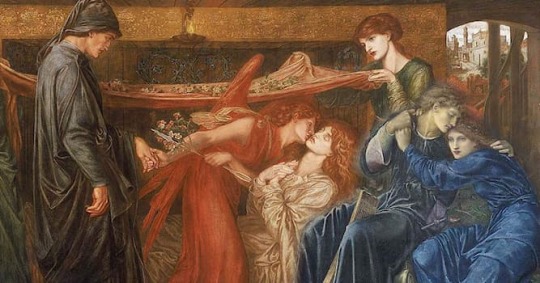
What was the name of the group of young artists who banded together to revitalise British painting in 1848?
The Pre-Raphaelite Brotherhood was a group of young artists who came together in 1848 with the aim of revitalizing British painting. Their main inspiration was the art that came before the High Renaissance, particularly the work of the early Italian Renaissance masters. The Brotherhood believed that art had become stagnant and that it needed to return to its roots to regain its vitality.
Members of the Brotherhood included William Holman Hunt, John Everett Millais, and Dante Gabriel Rossetti. They were all influenced by the ideas of Romanticism and the writings of John Ruskin. The Brotherhood's work was characterised by a vivid use of colour, a focus on nature, and attention to detail.
The Brotherhood's early works were received with mixed reviews. Some critics praised their use of colour, while others found their work too sentimental. However, over time, their style became more accepted, and they became an important influence on British art.
The Brotherhood's legacy can be seen in the work of later British artists such as Edward Burne-Jones and William Morris. The influence of the Pre-Raphaelites can also be seen in the Arts and Crafts movement, which sought to revive traditional crafts and techniques.
The Pre-Raphaelite Brotherhood was an essential movement in British art. Their commitment to reviving traditional techniques and their focus on nature and detail helped shape British art's direction in the late 19th and early 20th centuries.
4 notes
·
View notes
Text
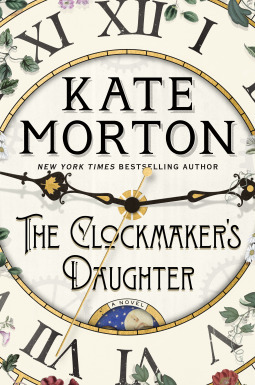
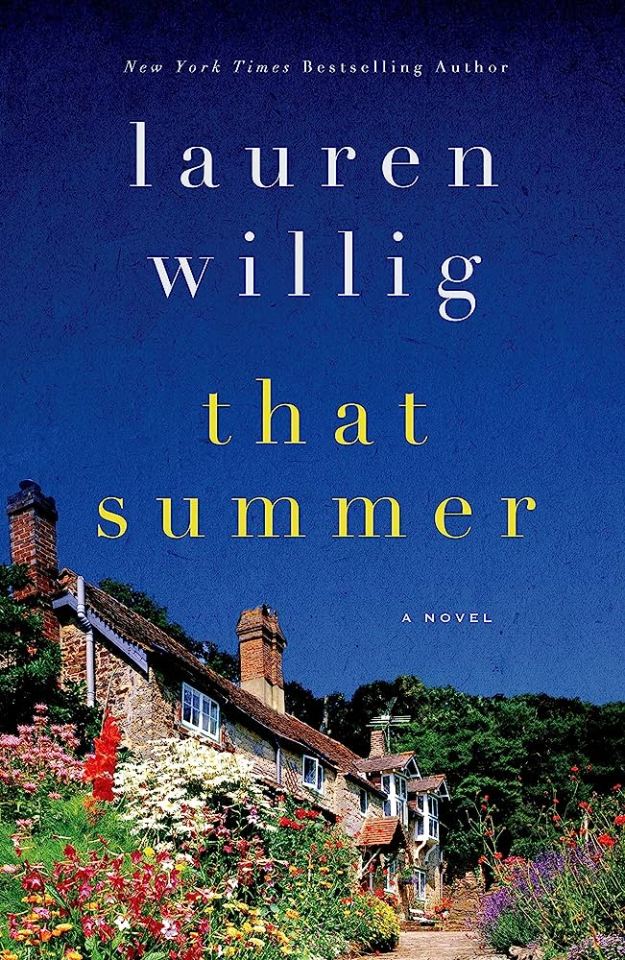
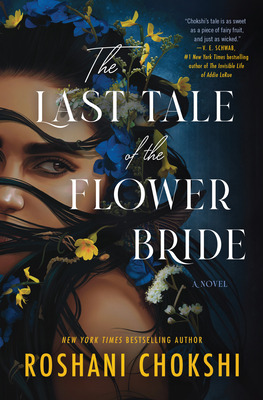
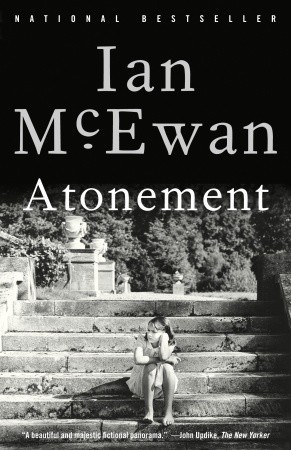
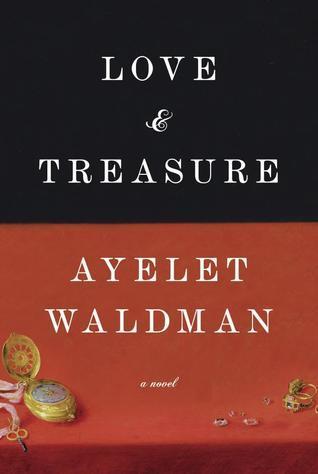
Read-Alike Friday: The Clockmaker's Daughter by Kate Morton
The Clockmaker's Daughter by Kate Morton
My real name, no one remembers. The truth about that summer, no one else knows.
In the summer of 1862, a group of young artists led by the passionate and talented Edward Radcliffe descends upon Birchwood Manor on the banks of the Upper Thames. Their plan: to spend a secluded summer month in a haze of inspiration and creativity. But by the time their stay is over, one woman has been shot dead while another has disappeared; a priceless heirloom is missing; and Edward Radcliffe's life is in ruins.
Over one hundred and fifty years later, Elodie Winslow, a young archivist in London, uncovers a leather satchel containing two seemingly unrelated items: a sepia photograph of an arresting-looking woman in Victorian clothing, and an artist's sketchbook containing the drawing of a twin-gabled house on the bend of a river.
Why does Birchwood Manor feel so familiar to Elodie? And who is the beautiful woman in the photograph? Will she ever give up her secrets?
Told by multiple voices across time, The Clockmaker's Daughter is a story of murder, mystery and thievery, of art, love and loss. And flowing through its pages like a river, is the voice of a woman who stands outside time, whose name has been forgotten by history, but who has watched it all unfold: Birdie Bell, the clockmaker's daughter.
That Summer by Lauren Willig
2009: When Julia Conley hears that she has inherited a house outside London from an unknown great-aunt, she assumes it's a joke. She hasn't been back to England since the car crash that killed her mother when she was six, an event she remembers only in her nightmares. But when she arrives at Herne Hill to sort through the house—with the help of her cousin Natasha and sexy antiques dealer Nicholas—bits of memory start coming back. And then she discovers a pre-Raphaelite painting, hidden behind the false back of an old wardrobe, and a window onto the house's shrouded history begins to open...
1849: Imogen Grantham has spent nearly a decade trapped in a loveless marriage to a much older man, Arthur. The one bright spot in her life is her step-daughter, Evie, a high-spirited sixteen year old who is the closest thing to a child Imogen hopes to have. But everything changes when three young painters come to see Arthur's collection of medieval artifacts, including Gavin Thorne, a quiet man with the unsettling ability to read Imogen better than anyone ever has. When Arthur hires Gavin to paint her portrait, none of them can guess what the hands of fate have set in motion.
From modern-day England to the early days of the Preraphaelite movement, Lauren Willig's That Summer takes readers on an un-put-downable journey through a mysterious old house, a hidden love affair, and one woman's search for the truth about her past—and herself.
The Last Tale of the Flower Bride by Roshani Chokshi
Once upon a time, a man who believed in fairy tales married a beautiful, mysterious woman named Indigo Maxwell-Casteñada. He was a scholar of myths. She was heiress to a fortune. They exchanged gifts and stories and believed they would live happily ever after—and in exchange for her love, Indigo extracted a promise: that her bridegroom would never pry into her past.
But when Indigo learns that her estranged aunt is dying and the couple is forced to return to her childhood home, the House of Dreams, the bridegroom will soon find himself unable to resist. For within the crumbling manor’s extravagant rooms and musty halls, there lurks the shadow of another girl: Azure, Indigo’s dearest childhood friend who suddenly disappeared. As the house slowly reveals his wife’s secrets, the bridegroom will be forced to choose between reality and fantasy, even if doing so threatens to destroy their marriage . . . or their lives.
Combining the lush, haunting atmosphere of Mexican Gothic with the dreamy enchantment of The Invisible Life of Addie LaRue, The Last Tale of the Flower Bride is a spellbinding and darkly romantic page-turner about love and lies, secrets and betrayal, and the stories we tell ourselves to survive.
Atonement by Ian McEwan
On the hottest day of the summer of 1935, thirteen-year-old Briony Tallis sees her sister Cecilia strip off her clothes and plunge into the fountain in the garden of their country house. Watching her is Robbie Turner, son of the Tallis’s cleaning lady, whose education has been subsidized by Cecilia’s and Briony’s father, and who, like Cecilia, has recently come down from Cambridge. By day's end, their lives will be changed – irrevocably. Robbie and Cecilia will have crossed a boundary they had not imagined at its start. And Briony will have witnessed mysteries, seen an unspeakable word, and committed a crime for which she will spend the rest of her life trying to atone…
Brilliant and utterly enthralling in its depiction of love and war and class and childhood and England, Atonement is a profound – and profoundly moving – exploration of shame and forgiveness, of atonement and of the possibility of absolution.
Love & Treasure by Ayelet Waldman
A fugitive train loaded with the plunder of a doomed people. A dazzling jewelled pendant in the form of a stylized peacock. And three men - an American infantry captain in World War II, an Israeli-born dealer in art stolen by the Nazis, and a pioneering psychiatrist in fin-de-siècle Budapest - who find their carefully-wrought lives turned upside-down by three fierce women, each locked in a struggle against her own history and the history of our times. And at the centre of Love and Treasure, nested like a photograph hidden in a locket, a mystery: where does the worth of a people and its treasures truly lie? What is the value of a gift, when giver and recipient have been lost - of a love offering when the beloved is no more?
In an intricately constructed narrative that is by turns funny and tragic, thrilling and harrowing, with all the expertise and narrative drive that readers have come to expect from her work, Waldman traces the unlikely journey, from 1914 Budapest to post-war Salzburg to present-day New York, of the peacock pendant whose significance changes - token of friendship, love-offering, unlucky talisman with the changes of fortune undergone by her characters as they find themselves caught up in the ebb and flow of modern European history.
#historical fiction#fiction#fiction books#mystery#readalikes#kate morton#reading recommendations#reading recs#book recommendations#book recs#library books#tbr#tbrpile#to read#booklr#book tumblr#book blog#library blog
5 notes
·
View notes